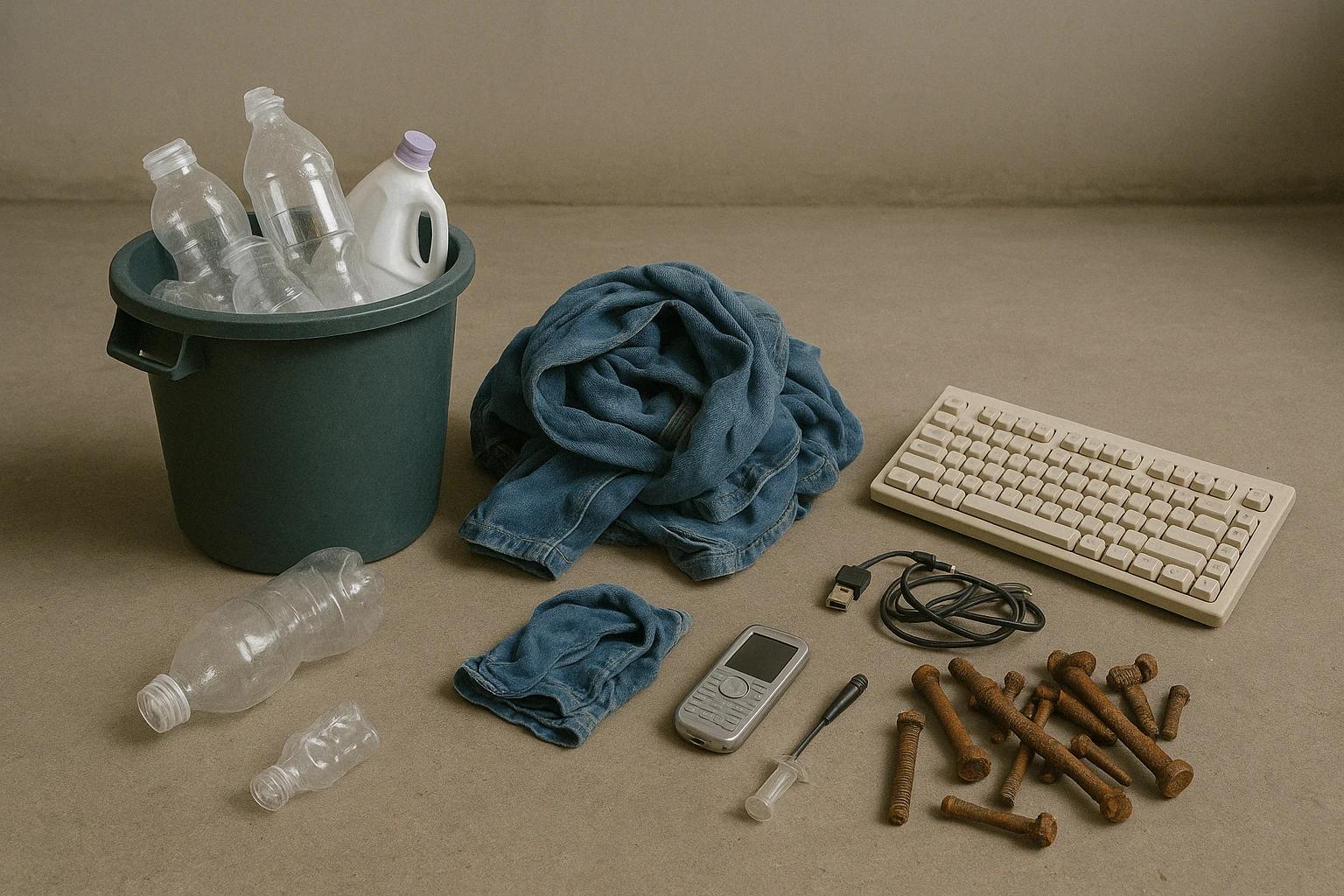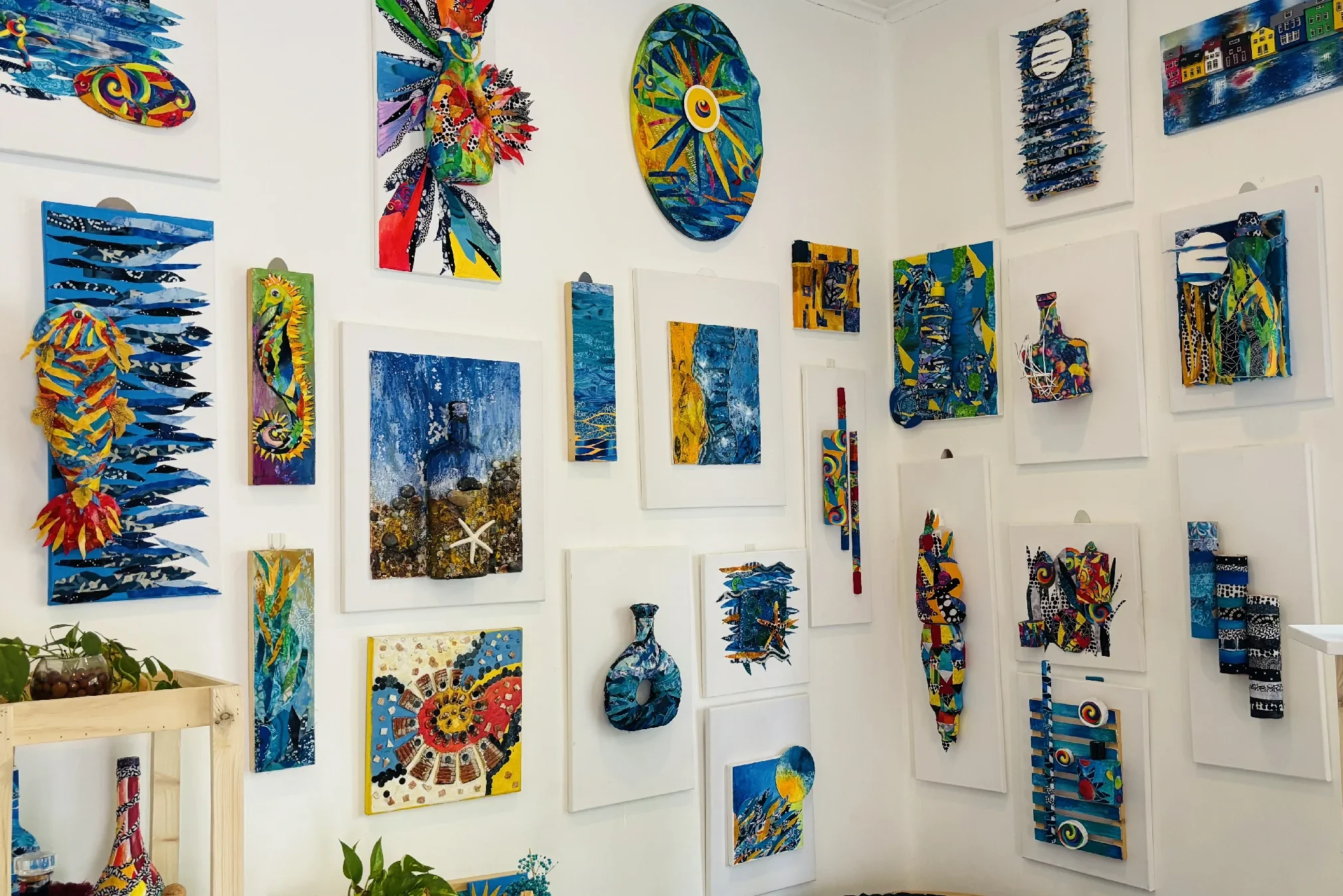
Can trash be transformed into treasure? Absolutely. Across the world, communities are discovering that upcycled art – the creative reuse of discarded items – not only produces unique and beautiful creations, but also sparks inspiration, unity, and a deeper sense of environmental responsibility. What was once considered junk can find new life as sustainable art, helping neighborhoods engage in the circular economy and turning waste into wonder. In this post, we explore how transforming trash into treasure is fueling community creativity, promoting sustainability, and empowering people to see “waste” in a whole new light.


For an upcycle artist, a pile of scrap metal or a stack of plastic bottles isn’t garbage – it’s a palette of possibilities. Upcycled art, often called creative reuse, involves taking materials that others consider waste and transforming them into something meaningful and beautiful. Unlike basic recycling (which breaks materials down), upcycling keeps materials intact and repurposes them in innovative ways, often increasing their value or utility in the process. In other words, it’s trash-to-treasure alchemy, where imagination turns trash into artistic treasure.
Artists often craft upcycled art from broken tools, metal scraps, and everyday junk, as seen in this fish-shaped assemblage made of old metal parts. Transformations like these illustrate how creative reuse can turn forgotten objects into fascinating artworks. Each piece of upcycled art carries a story of resourcefulness and creativity. The artist (or community) has looked at a discarded object and seen potential – a chance to create something new. This process not only results in one-of-a-kind art, but also highlights a key idea: with a bit of creativity, eco-friendly materials for art are everywhere around us, waiting to be reinvented.
Upcycled art has a magical way of drawing people together. As a form of sustainable art, it’s not limited to professional studios or galleries – entire neighborhoods, schools, and community groups can get involved. Organizing a community sculpture project or a local “trash to treasure” art fair is a fun, hands-on way to promote community engagement. Neighbors might collect plastic bottles, metal odds and ends, old textiles and other cast-offs, then collaborate to design a public art piece. The process of creating art from waste not only beautifies a space but also bonds participants around a shared eco-friendly mission.
Community upcycling projects often involve workshops, contests, or festivals where families and friends come together to turn trash into art. For example, some towns host “Trash to Treasure” contests that challenge residents to transform recycled materials into stunning works. The excitement is contagious and inclusive – people of all ages can contribute, whether by donating materials, building the artwork, or simply cheering on the creators. By making art together, participants form stronger community connections and take pride in their collective creation.
One of the powerful impacts of upcycled art is how it changes our relationship with materials. Every day, vast amounts of waste are generated and sent to landfills – in 2018, the U.S. alone sent over 292 million tons of solid waste to disposalcascadepbs.org. Imagine the creative potential if even a fraction of that was diverted into art projects! By turning would-be trash into art supplies, upcycling keeps materials in use and out of the dump, directly supporting a more circular economy. In a circular economy, we aim to waste less and reuse or reinvent more – and upcycled art is a shining example of this principle in action.
Instead of buying new canvases or raw materials, upcycle artists and community groups scavenge for eco-friendly materials in their own trash bins, thrift stores, or recycling centers. Anything can become an art supply: plastic packaging, old CDs, broken electronics, wood pallets, glass jars, fabric offcuts – you name it. A stack of cardboard might turn into a sturdy sculpture; shattered glass could form a sparkling mosaic. By reimagining waste as a resource, artists dramatically reduce the demand for new materials (and the energy needed to produce them) while also cutting down on pollution from manufacturing and landfill dumping. This means every upcycled creation has a smaller carbon footprint than an equivalent piece made from brand-new resources.
Communities around the world have even installed large upcycled sculptures in public spaces, like this giant beetle artwork made entirely from repurposed metal parts. Such creative feats demonstrate the circular economy in action – turning discarded objects into durable art that enriches public spaces instead of polluting them. Upcycled art shows that “junk” can have a long, useful life if we choose to get creative. It shifts the mindset from a throwaway culture to one of continuous reuse. When people see an impressive sculpture or a beautiful installation made out of old tools, gears, and scrap, it drives home the point that waste-to-art solutions are not just eco-friendly, but also incredibly cool and inventive.
Beyond the practical benefits, upcycled art resonates on a personal and emotional level. There’s something truly heartwarming about witnessing a trash-to-treasure transformation or creating one yourself. Participants often feel a surge of pride and accomplishment when they turn waste into something beautiful and useful. It’s empowering – a reminder that individual actions can make a difference. A child who builds a birdhouse from a plastic jug, or a team of neighbors who assemble a sculpture from beach litter, will likely never look at “trash” the same way again.
Spectators experience the magic too. It’s not uncommon to hear someone exclaim, “I can’t believe this was made from garbage!” when viewing upcycled art. That sense of surprise and delight is powerful: it sparks curiosity and reflection. Upcycled artworks often carry a subtle message about consumption and waste. A whimsical fish made from plastic debris might hint at the issue of ocean pollution; a portrait woven from textile scraps could prompt thoughts about fast fashion waste. Without saying a word, these artworks raise environmental awareness. They start conversations and get people thinking about their own relationship with stuff – what we throw away, and what we could reuse.
Importantly, upcycled art brings a sense of hope to environmental issues. Instead of focusing on doom and gloom, it shows a positive, creative solution. By turning environmental problems into a creative challenge, this art form makes sustainability feel accessible and even joyful. In essence, the waste-to-art movement transforms more than materials – it transforms mindsets. It proves that with creativity and care, we can rewrite the story of waste and find beauty and value in the things we once took for granted.
Upcycled art is more than a trend – it’s a inspiring movement that invites everyone to participate in building a greener, more imaginative world. From reducing waste and nurturing community spirit to sparking joy and environmental awareness, the act of turning trash into treasure shows us what’s possible when creativity meets sustainability. Are you feeling inspired to give it a try? Start small: rescue an old jar or a torn T-shirt and see what treasure you can create from it. Organize a craft night with friends using recyclables, or encourage your local community center to host a creative reuse workshop. Every little project makes a difference.
At Green Canvas, our mission is to empower and celebrate this kind of creativity. We invite you to join us in the trash-to-treasure journey. Share your upcycled creations with your community (and with us!), support local artists who use eco-friendly materials, and keep thinking outside the box when it comes to waste. Together, we can turn more trash into treasure – one creative reuse at a time. Let’s paint a greener future, one recycled masterpiece at a time! 🎉🌿